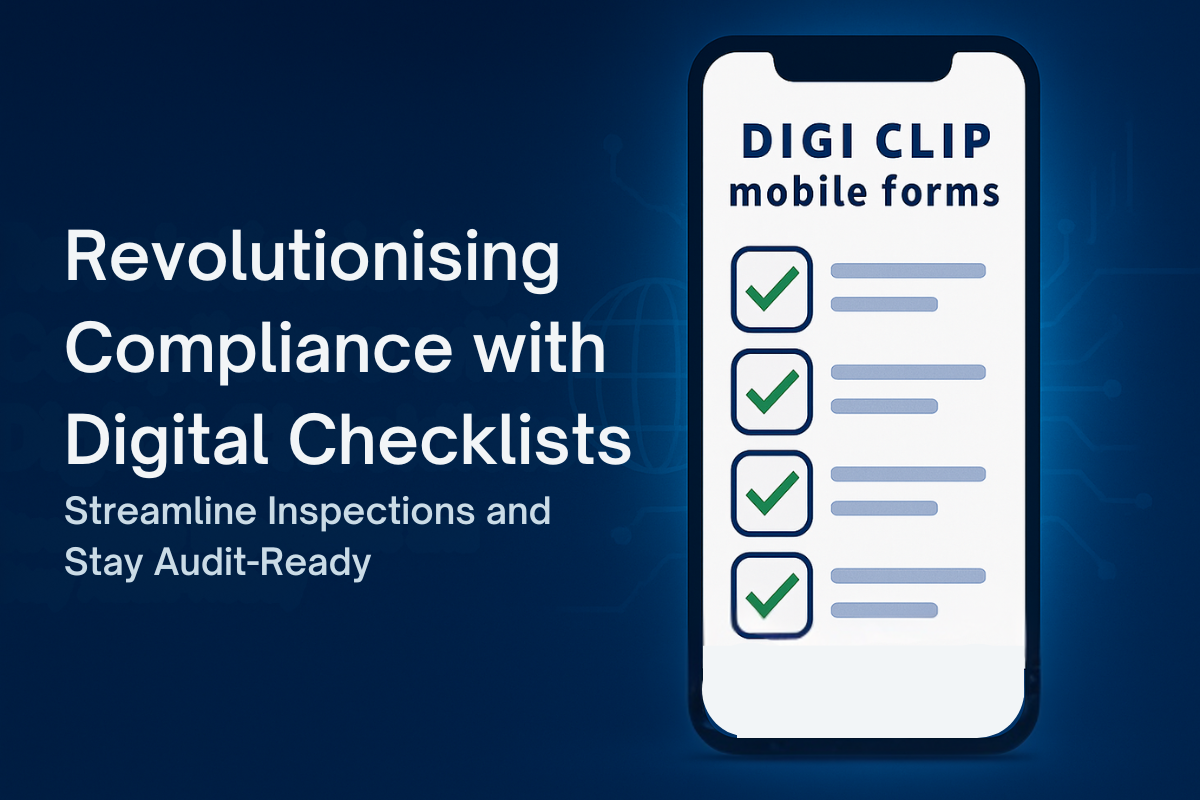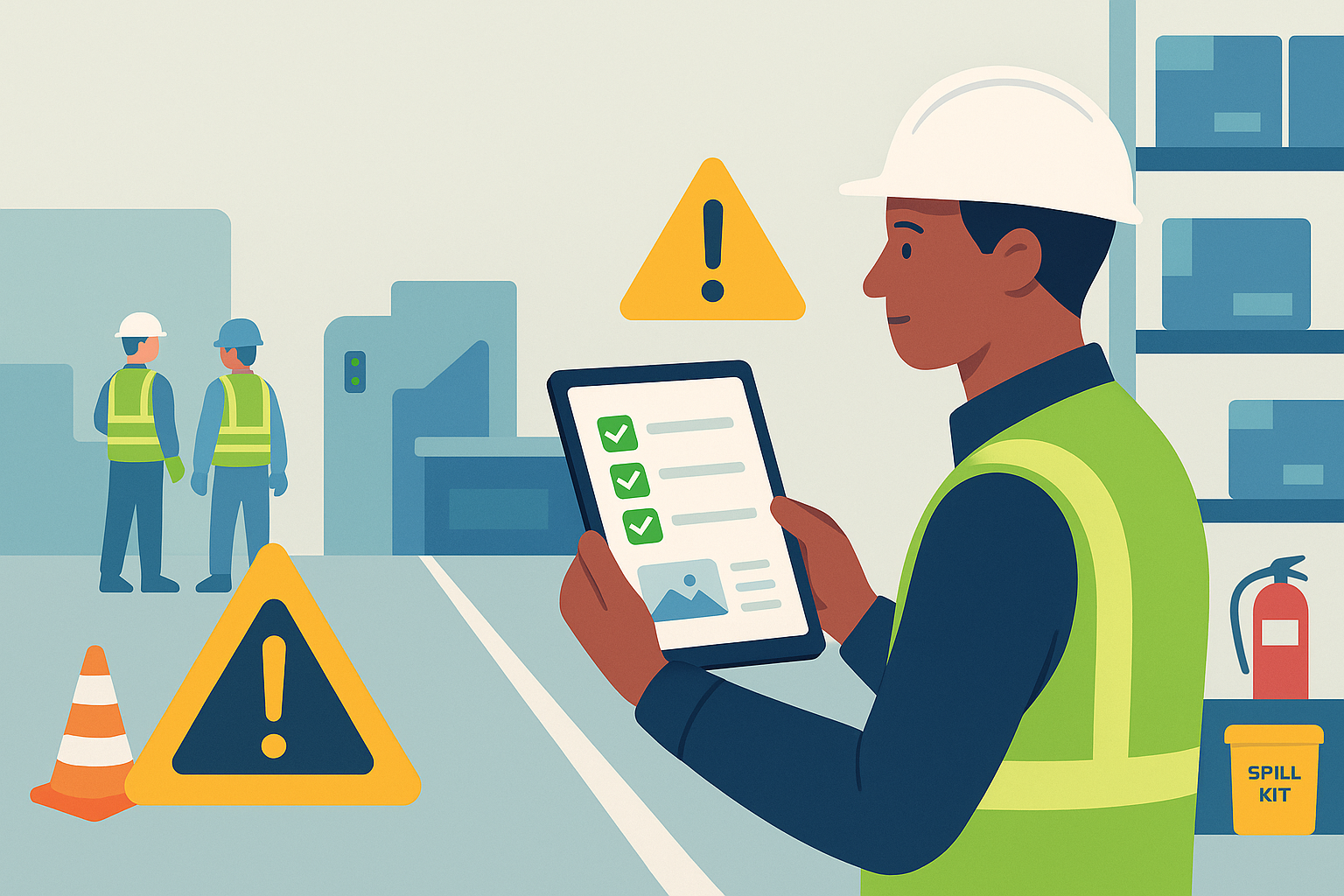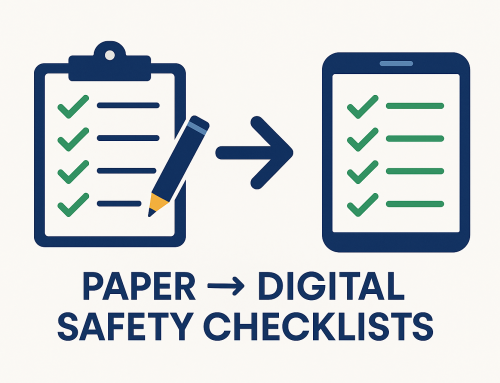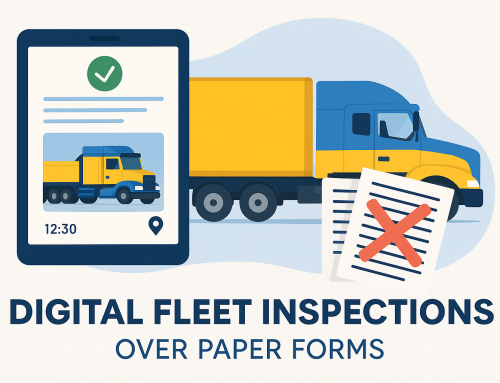Workplace Hazard Inspection Checklists: Build, Run, and Prove WHS Compliance
If you manage safety, you already know the backbone of a strong WHS system is routine, evidence-based workplace hazard inspection checklists. Done well, they surface risks early, route failures to accountable owners, and stand up to scrutiny from auditors and regulators. Done poorly—on paper, with vague items and missing photos—they create blind spots and weak records.
Quick Highlights
- Design inspection checklists that align with ISO 45001 principles and WHS risk management.
- Capture photo evidence, geo-time stamps, and signatures to create audit-ready records.
- Send failed items straight to an Action Register with owners and due dates.
- Monitor trends and close the loop with reviews and verification.
Authoritative guidance: Safe Work Australia – How to Manage WHS Risks • ISO 45001 (Occupational Health & Safety)
Table of Contents
Why Workplace Hazard Inspection Checklists Matter
Hazard inspections translate your risk management plan into daily practice. They uncover sub-standard conditions (e.g., guarding, housekeeping, storage, traffic segregation) and unsafe acts (e.g., working at height without restraint). Strong workplace hazard inspection checklists ensure every pass/fail is documented, evidence is captured, and corrective actions are tracked to completion—protecting people and proving compliance.
- Consistency: Standardised items and definitions across sites and shifts.
- Evidence: Photos, comments, geo-time stamps, signatures.
- Accountability: Failed items generate actions with owners and deadlines.
- Continuous improvement: Analytics highlight trends and recurring issues.
To deepen your safety content strategy, see: Digital Checklists for Workplace Safety and Enhancing Compliance Audits with Digital Tools.
What to Include in Your Checklist
Start with clear sections that reflect your risk profile and tasks. Example structure:
- General Site Conditions: Housekeeping, lighting, spill control, walkways, signage.
- Plant & Equipment: Guards, emergency stops, maintenance tags, pre-starts.
- Hazardous Substances: Labelling, SDS access, storage, handling, ventilation.
- Traffic Management: Pedestrian segregation, speed control, reversing zones, spotters.
- Working at Height: Edge protection, anchors, scaffolds, harness checks.
- Electrical: Leads, RCDs, isolation/LOTO, housekeeping around boards.
- Manual Handling & Ergonomics: Aids, task design, posture risks.
- Emergency Preparedness: Exits, extinguishers, first aid, spill kits, wardens.
- PPE: Availability, suitability, condition, compliance.
Each item should have response options (e.g., Yes / No / N/A), plus a comment field and photo capture. When “No” is selected, the system should prompt for a description and create a corrective action automatically.
How to Build a High-Quality Template
- Define the purpose: What risks and controls must be verified? Which standards apply?
- Write crystal-clear items: Use plain language; avoid ambiguous checks like “Equipment OK”.
- Include evidence fields: Photos, comments, signatures, geo-time stamps.
- Wire to actions: Failed items should create an action with owner, due date, and priority.
- Version control: Record template changes and re-train staff when updated.
- Pilot and refine: Trial on the floor, gather feedback, improve wording and flow.
Need an action-tracking backbone? Explore the DIGI CLIP Action Register and how it closes the loop from inspection to verified completion.
How to Run Inspections That Actually Improve Safety
Step-by-Step: Running a Hazard Inspection
- Prepare: Review previous actions, incident learnings, and high-risk areas.
- Walk the job: Observe tasks in real time; speak with workers; validate controls in use.
- Capture evidence: Photograph deficiencies and exemplary controls; add precise comments.
- Escalate immediately: For critical risks, create actions on the spot and notify owners.
- Verify and sign: Record who inspected, when, and where; obtain signatures.
- Review and follow-up: Track action progress; verify close-outs and effectiveness.
Want deeper digital benefits? Read Top Benefits of Digital Inspection Apps for Compliance and From Paper to Digital: Compliance Tools for SMBs.
Paper vs Digital: Which Drives Better Outcomes?
| Criteria | Paper Checklists | Digital Checklists (DIGI CLIP) |
|---|---|---|
| Evidence Capture | Manual photos; unreliable attachment to records | Inline photos, comments, geo-time stamps, signatures |
| Action Tracking | Ad-hoc emails/notes; easy to lose | Automatic action creation with owner & due date (Action Register) |
| Audit Readiness | Hard to retrieve; missing context | Searchable logs, export to CSV/Excel/PDF, audit-ready trails |
| Analytics & Trends | Manual collation | Dashboards & reports highlight recurring issues |
| Multi-Site Consistency | Version drift; inconsistent wording | Single source of truth; version control across sites |
| Speed & Adoption | Slow, error-prone, easily skipped steps | Guided flows; mandatory fields; mobile-friendly |
Case Study: From Paper to Actionable Insights
A regional logistics operator moved from paper to DIGI CLIP for weekly hazard inspections. Within three months, action close-out rates lifted from 62% to 92%, and average time-to-close fell from 16.4 days to 6.8 days. The biggest shift? Evidence. Photos and geo-time stamps removed ambiguity, while the Action Register made owners visible and deadlines real.
“DIGI CLIP turned our inspections into a genuine improvement loop. We don’t chase paper anymore—every failed item becomes a tracked action.” — Operations Manager, Bates Ag Haulage
About DIGI CLIP Mobile Forms
DIGI CLIP is a mobile checklist and inspection app that simplifies safety, compliance, and operational reporting. Designed for transport, warehousing, agriculture, construction and more, DIGI CLIP replaces paper forms with real-time digital checklists. Built-in photo capture, automated alerts, geo-time stamping, and a central Action Register ensure nothing gets missed.
Why try DIGI CLIP? Because safety actions don’t count if you can’t prove them. Start your free trial—no credit card needed—and see how simple compliance can be.
Frequently Asked Questions
What is a workplace hazard inspection checklist?
How often should we run hazard inspections?
What evidence should we capture?
How do failed items become actions?
Can we customise checklists by site or task?
What’s the best way to prove WHS compliance?
Conclusion: Make Hazard Inspections Actionable—and Provable
The goal of workplace hazard inspection checklists isn’t paperwork—it’s prevention. Build clear templates, capture solid evidence, and ensure every failure becomes a tracked action with verified completion. With DIGI CLIP, you get consistent inspections, a visible Action Register, and audit-ready records that demonstrate WHS compliance and protect your people.
Keep exploring: Digital Checklists for Workplace Safety • Digital Inspection Apps for Compliance • Enhancing Compliance Audits with Digital Tools • From Paper to Digital Compliance Tools for SMBs
If you liked this post? Why not share it!








Leave A Comment